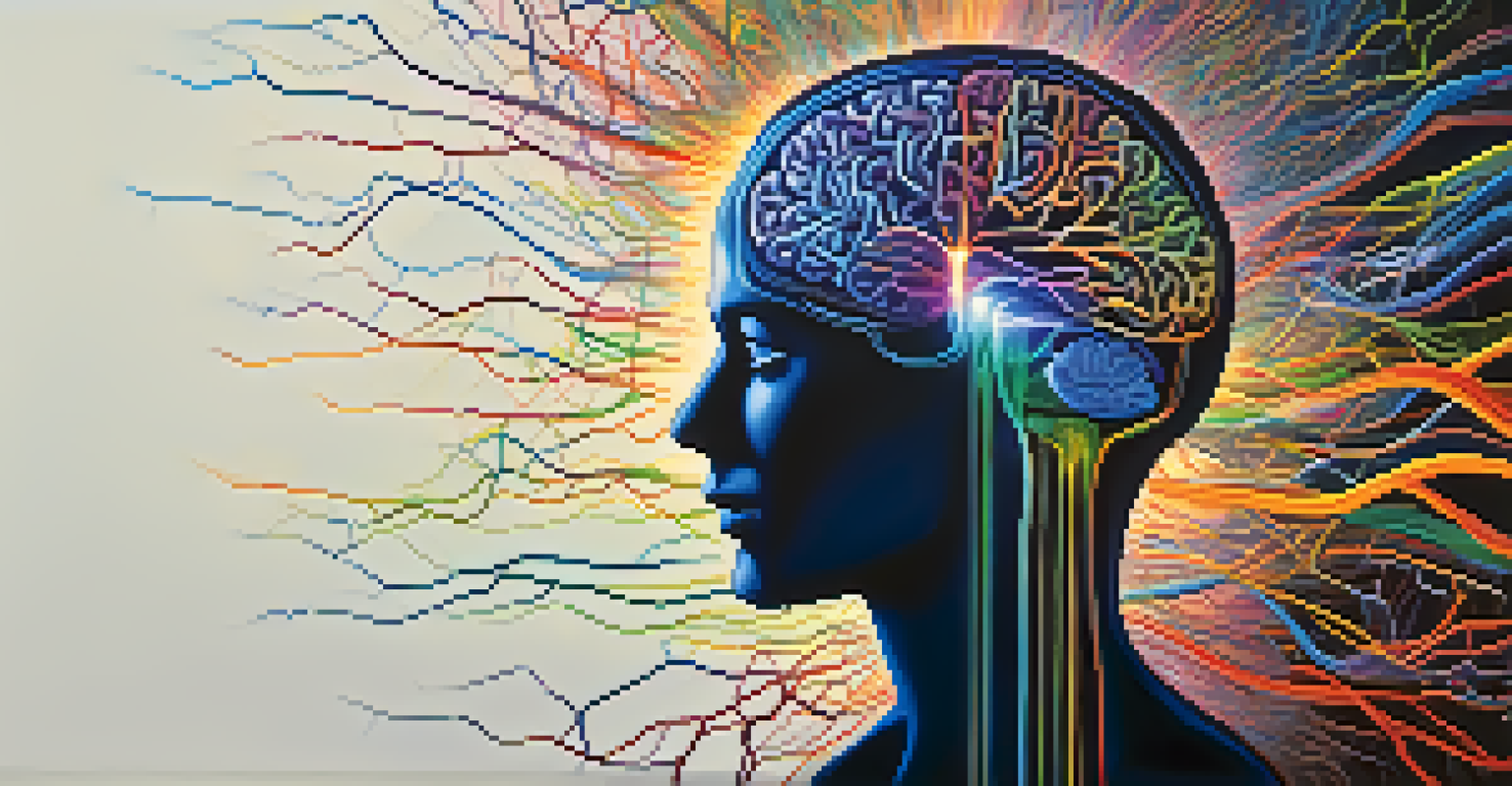Hallucinogenic Substances and Their Impact on Pain Management

Understanding Hallucinogenic Substances
Hallucinogenic substances, often referred to as psychedelics, are compounds that alter perception, mood, and cognitive processes. Common examples include psilocybin, found in magic mushrooms, and LSD. These substances have been used for centuries in various cultures for spiritual and healing purposes, but their potential for modern medicine is just beginning to be explored.
Psychedelics are not a panacea, but they can be an important addition to our toolbox for treating pain and other chronic conditions.
In recent years, research has indicated that psychedelics may play a role in pain management, particularly for chronic conditions that are resistant to conventional treatments. The way these substances interact with the brain can lead to profound changes in how pain is perceived, often providing relief where other medications fail.
While the idea of using hallucinogens for pain management might raise eyebrows, it's important to approach this topic with an open mind. The science behind these substances is evolving, and understanding their mechanisms can help us appreciate their potential benefits.
The Science Behind Pain Perception
Pain is not just a physical sensation; it's a complex experience influenced by psychological and emotional factors. Our brains process pain through intricate pathways, and this is where hallucinogenic substances may provide a unique advantage. By altering brain chemistry, these substances can potentially change how pain signals are interpreted.

Research suggests that psychedelics can promote neuroplasticity, which is the brain's ability to reorganize itself. This means that using substances like psilocybin could help patients 'rewire' their pain response, allowing for a more manageable experience. This is particularly promising for those suffering from chronic pain conditions such as fibromyalgia or neuropathy.
Psychedelics for Pain Relief
Hallucinogenic substances like psilocybin and ketamine are being researched for their potential to manage chronic pain effectively.
Furthermore, the emotional relief that often accompanies psychedelic experiences can help patients cope better with their pain. By addressing both the physical and emotional aspects, hallucinogens might offer a more holistic approach to pain management.
Current Research and Findings
Studies examining the use of psychedelics for pain management are gaining traction. Early trials have shown that substances like ketamine, a dissociative anesthetic with hallucinogenic properties, can provide rapid relief for chronic pain conditions. Research has indicated that ketamine infusions can significantly reduce pain scores in patients with treatment-resistant pain.
The potential of psychedelics lies in their ability to shift our perspective, not just on pain, but on life itself.
Another promising area of study involves psilocybin, which has shown potential in treating psychological distress associated with chronic pain. A recent study found that patients reported a significant reduction in pain and anxiety after participating in guided psilocybin sessions. This suggests that the therapeutic context and support during these experiences play a crucial role in their effectiveness.
While these findings are exciting, it's essential to note that more research is needed to fully understand the long-term effects and safety of using hallucinogens for pain management. Ongoing clinical trials will help clarify how these substances can be integrated into current pain management practices.
Potential Benefits of Hallucinogens in Pain Management
One of the most significant benefits of using hallucinogenic substances for pain management is their ability to provide relief without the side effects commonly associated with traditional pain medications. Opioids, for example, can lead to dependency and a host of other issues, whereas psychedelics are not considered addictive and may even foster a sense of emotional healing.
Moreover, hallucinogens can enhance creativity and promote new perspectives on pain, allowing patients to reframe their experiences. This psychological shift can be transformative, enabling individuals to engage more fully in their lives despite their pain. Patients often describe a sense of connectedness and understanding of their condition that transcends the physical symptoms.
Holistic Approach to Treatment
Psychedelics may provide emotional relief alongside physical pain management, offering a more comprehensive treatment strategy.
Additionally, the emerging field of psychedelic therapy incorporates trained professionals to guide patients through their experiences, ensuring safety and support. This structured approach maximizes the potential benefits while minimizing any risks associated with the use of hallucinogens.
Challenges and Concerns
Despite the promising results, the use of hallucinogenic substances in pain management does come with challenges. One primary concern is the stigma associated with psychedelics, which can hinder research funding and public acceptance. Many people still view these substances as purely recreational, rather than as potential therapeutic agents.
Another challenge lies in the regulatory landscape surrounding psychedelics. In many regions, these substances remain classified as illegal drugs, making clinical research difficult. Navigating the legal framework to conduct studies and develop treatments can be a complex process that slows down progress in this area.
Moreover, while psychedelics may help some patients, they are not a one-size-fits-all solution. Individual responses can vary widely, and some may experience adverse effects. It’s crucial for healthcare providers to assess each patient’s unique situation and consider alternative treatments when necessary.
Patient Experiences and Anecdotes
Real-life stories often provide compelling insights into the potential of hallucinogens for pain management. For instance, many patients with chronic pain have reported transformative experiences during guided psilocybin sessions, describing significant reductions in their pain levels and an improved quality of life. These narratives highlight the profound impact that a shift in perception can have on managing pain.
One patient shared that after a series of ketamine infusions, they felt a renewed sense of hope and optimism. They described how the treatment not only alleviated their physical pain but also helped them confront underlying emotional issues related to their condition. This holistic benefit is what many advocates of psychedelic therapy emphasize.
Challenges in Research and Stigma
Despite promising results, stigma and regulatory hurdles pose significant challenges to the acceptance and study of psychedelics in medicine.
These personal accounts serve as powerful testimonials to the potential of hallucinogens in pain management. As more individuals share their experiences, it becomes increasingly clear that the conversation around psychedelics is evolving, and many are eager for more research and acceptance.
The Future of Hallucinogens in Pain Management
Looking ahead, the future of hallucinogenic substances in pain management appears promising. As research continues to unfold, we may see a shift in how the medical community views these substances, moving from skepticism to acceptance. This change could lead to more comprehensive treatment options for patients suffering from chronic pain.
Furthermore, advancements in technology and a greater understanding of neuroscience could enhance our knowledge of how hallucinogens affect pain pathways. This could lead to the development of targeted therapies that harness the benefits of psychedelics while minimizing risks. Imagine a world where chronic pain is managed through innovative, safe, and effective treatments.

Ultimately, as stigma fades and research advances, hallucinogens could become a vital part of a multidisciplinary approach to pain management. By integrating mind-body techniques with traditional medical practices, we can offer patients a more holistic, compassionate way to cope with their challenges.